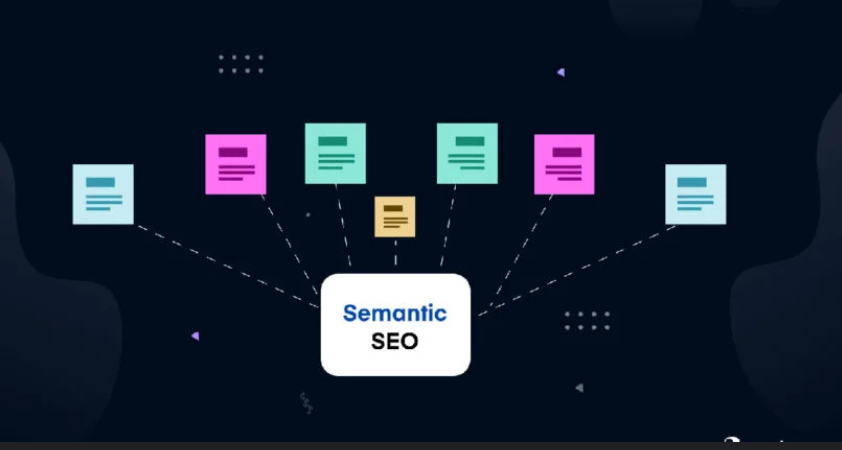Unlocking the Power of Semantic Content Networks by Ben Stace
In the rapidly evolving world of digital marketing and content strategy, staying ahead of the curve requires more than just following trends—it demands a deep understanding of how content, context, and user intent intersect. One of the most forward-thinking approaches gaining momentum today is the concept of semantic content networks by Ben Stace. These networks go beyond traditional SEO and keyword tactics, offering a structured, intelligent way to build content ecosystems that reflect how real people search, think, and engage online. Ben Stace, a leading voice in content intelligence and semantic search, has pioneered this approach to help brands and creators craft more meaningful, interconnected content experiences. If you’re looking to build long-term authority, enhance your site’s visibility, and align with the future of search, understanding semantic content networks by Ben Stace is essential.
What Are Semantic Content Networks?
Semantic content networks are not just a trend—they’re the future of intelligent content. Unlike linear or siloed content models, semantic networks focus on meaningful connections between ideas, using structured relationships between entities, topics, and intent.
Think of it like this: Rather than creating standalone articles, a semantic network ensures each piece of content is contextually linked, strengthening its relevance in the eyes of search engines and users.
Who Is Ben Stace and Why Does He Matter?
Ben Stace is a thought leader and strategist known for his innovative approach to semantic search and content architecture. With a background in digital intelligence, data structuring, and SEO, he has developed practical methodologies that help brands map content semantically, improve topical authority, and dominate niche search categories.
Through his workshops, tools, and frameworks, Stace is empowering creators and strategists to move beyond traditional content marketing—and into a new era powered by semantic relationships.
How Semantic Content Networks Actually Work
Semantic content networks rely on three core pillars:
1. Entities and Relationships
Entities (people, places, concepts, products) are connected in meaningful ways. For example, “Ben Stace” is connected to “semantic networks,” “SEO,” and “digital content.”
2. Context and Intent
It’s not just what you say, but why it matters. Semantic networks aim to understand user intent—whether they’re researching, buying, or comparing.
3. Topic Clustering
Rather than isolated articles, content is built around topic clusters where a “pillar page” connects to in-depth subtopics. This model helps search engines understand your content ecosystem holistically.
Why You Should Care: Key Benefits for Creators and Marketers
Whether you’re a blogger, brand strategist, or enterprise content lead, here’s what semantic content networks by Ben Stace can do for you:
✅ Stronger SEO and Visibility
Semantic relationships improve how search engines crawl, interpret, and rank your content.
✅ Enhanced User Experience
Users navigate naturally between related topics, reducing bounce rates and boosting engagement.
✅ Improved Topical Authority
By covering connected topics deeply, you signal expertise—an essential part of Google’s E-E-A-T algorithm.
✅ Future-Ready Content
As AI, voice search, and natural language processing grow, semantic content is more adaptable and accessible.
How Ben Stace Applies These Principles in the Real World
Ben Stace doesn’t just theorize—he builds and implements. Here’s how:
- Workshops and Consulting: He guides teams through building custom semantic maps tailored to their audience and goals.
- Content Frameworks: Stace has developed models that break down the relationships between core topics and long-tail search intent.
- Case Studies: Brands using his semantic approach have seen significant boosts in organic visibility, time on site, and content performance metrics.
While specific tools may vary, the principles he applies are consistent: structure content with meaning, not just keywords.
How to Start Building Your Own Semantic Content Network
Here’s how you can apply this methodology:
1. Identify Core Entities
Start by defining the main topics you want to be known for.
2. Map Relationships
Use tools like InLinks, SEMRush Topic Research, or manual mind-mapping to uncover related topics and search intent.
3. Create Pillar + Cluster Content
Build a comprehensive pillar page supported by tightly focused, interlinked articles.
4. Use Structured Data
Add schema markup to help search engines understand your content relationships clearly.
5. Monitor and Refine
Use analytics to see how users move through your network and adjust based on gaps or user interest.
The Future of Semantic Content: Where It’s Heading
The digital content landscape is evolving—and semantic content networks are at the heart of that change. Here’s what’s next:
- AI and Language Models: Search engines will increasingly rely on semantic cues rather than string-based keyword matching.
- Knowledge Graph Integration: Google’s Knowledge Graph is already built on semantic principles; content networks aligned with it will dominate.
- Voice and Conversational Search: Contextual content will be key as users ask complex, multi-part questions.
Ben Stace’s work positions him as a leader in this transition, ensuring businesses are not just visible—but relevant and trusted.
Final Thoughts
In a world overflowing with content, semantic structure is the new superpower. And Ben Stace is showing the way forward. By applying the principles of semantic content networks, creators and businesses alike can future-proof their strategies, build real authority, and deliver a better experience to their audiences.
If you’re serious about elevating your digital presence, it’s time to stop thinking in keywords—and start thinking in connections.
Clearing Up Confusion (FAQs)
Q1. What makes semantic SEO different from traditional SEO?
Traditional SEO focuses on keywords; semantic SEO focuses on meaning, intent, and relationships between content elements.
Q2. Do I need special tools to build semantic networks?
While tools like InLinks or WordLift help, you can start manually by mapping content clusters and using structured linking and schema markup.
Q3. Can I apply this if I have a small blog or website?
Absolutely. Semantic content benefits websites of all sizes by improving clarity, navigation, and SEO.
Q4. Does this require technical expertise?
Basic SEO knowledge is helpful, but Ben Stace’s approach emphasizes clarity and simplicity—no advanced coding required.






